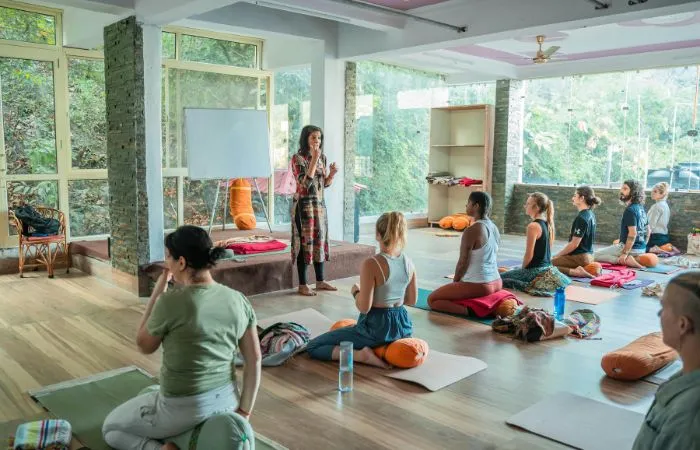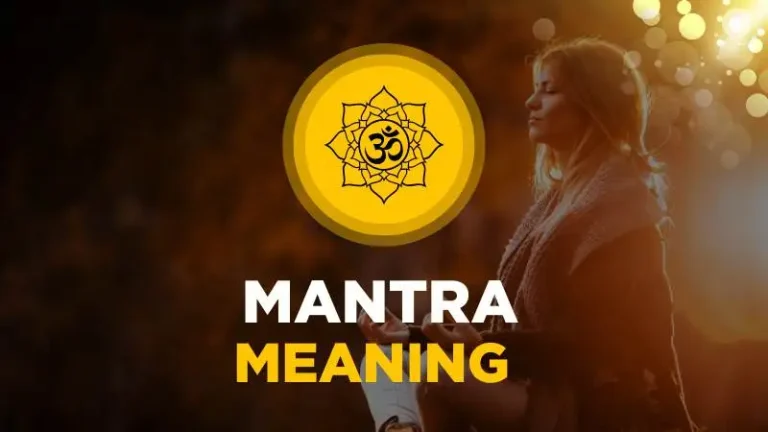
Metadescription: What does a yoga teacher do? Discover the key roles, skills, certifications, and career path to becoming a yoga teacher in 2025—expert tips included.
Teaching yoga is more than just leading a class—it’s about guiding people through a meaningful experience. From physical alignment to emotional support, yoga teachers play a unique role in helping others connect with themselves in a deeper way.
If you’re thinking about becoming a yoga teacher or simply curious about what the job actually involves, this breakdown will walk you through the core responsibilities, essential skills, and what a career in yoga.
What Is a Yoga Teacher?
A yoga teacher is someone trained to guide others through yoga practices like physical postures (asanas), breathing techniques (pranayama), mindfulness, and sometimes even philosophy or meditation.
But more than that, a yoga teacher is someone who creates a space for others to explore their body, breath, and mind.
You don’t need to be hyper-flexible or a spiritual guru to be a great teacher. What matters most is your ability to connect, support, and guide people through experiences that help them feel more grounded, strong, and aware.
What Does a Yoga Teacher Do?
Let’s break it down. Here’s what you can expect from the day-to-day responsibilities of a yoga teacher:
1. Plan and Sequence Classes
Every class needs structure. You’ll spend time creating flows that make sense anatomically, build progressively, and suit your students’ energy levels.
Whether you’re teaching a sweaty Vinyasa or a calming Yin class, the way you sequence matters.
Start by choosing a theme—like heart opening or hip mobility—and build your sequence around that. It helps your class feel more intentional and cohesive.
2. Guide with Clear Cues
It’s not enough to just demonstrate poses—you’ll also need to explain how to get into them, what to feel, and how to modify. Clear, simple cues make your students feel confident and safe.
Speak to what the student should be doing with their body and breath. For example, say “press your heels down and lift through your chest” instead of just naming the pose.
3. Offer Modifications and Adjustments
Not every student will be able to touch their toes or hold a handstand. You’ll learn how to offer modifications for different abilities, injuries, or body types. And if you use hands-on assists, always ask for consent first.
4. Create a Welcoming Environment
You’re not just teaching poses—you’re holding space. Your students might show up stressed, sore, or overwhelmed. It’s your job to make them feel seen and supported.
5. Share the Bigger Picture of Yoga
While not every class needs to dive into ancient texts, sprinkling in a bit of philosophy, intention-setting, or breath awareness can take your teaching to the next level. It’s a way to help students connect with yoga beyond the physical.
What Skills Do You Need to Be a Yoga Teacher in 2025?
Teaching yoga today requires more than just a love for the practice. Here’s what you’ll need to succeed and stand out:
Communication
You’ll be speaking a lot—so your words should be clear, confident, and easy to follow. You’ll also need to listen. Good communication is a two-way street.
Anatomy Know-How
You don’t need to be a doctor, but you do need a solid understanding of how the body works. This helps you create safe, smart sequences and offer useful adjustments.
Adaptability
Every class is different. One day you might teach a room full of beginners, the next a bunch of experienced yogis. Being able to adjust your teaching on the fly is a huge skill.
Emotional Intelligence
You’ll notice how your students feel just by how they move or breathe. Being able to sense their energy—and respond to it—is what makes a great teacher stand out.
Respect for Yoga’s Roots
Yoga isn’t just a workout—it’s a cultural and spiritual practice with deep roots in South Asia. A good teacher honors that, stays informed, and avoids cultural appropriation.
Bonus: Business Skills
If you’re planning to teach full-time or build your own brand, you’ll also need to know a bit about marketing, social media, or creating online classes. It’s part of the job now, especially in 2025.
What Certification Do You Need to Teach Yoga?
You’ll want to start with a 200-hour Yoga Teacher Training (YTT) from a reputable school—many practitioners begin their journey with the best yoga teacher training in Bali and India. This foundational training usually covers:
- Asana alignment and sequencin
- Breathwork and meditation
- Yoga philosophy and ethics
- Anatomy and physiology
- Practice teaching and feedback
After your 200-hour training, you’ll be qualified to teach general classes. If you want to deepen your skills, you can take a 300-hour advanced training or specialize in areas like:
- Prenatal Yoga
- Yin or Restorative Yoga
- Kids or teens yoga
- Trauma-informed yoga
Choose a YTT that gives you lots of practice teaching and real feedback—it’s the best way to build confidence.
What Does the Career Path of a Yoga Teacher Look Like?
There’s no one “right” way to grow as a yoga teacher. You get to carve your own path based on your interests, lifestyle, and goals.
Here’s a rough timeline many teachers follow:
Years 0–2: Gaining Experience
- Teach friends, community classes, or donation-based sessions
- Start working at studios or gyms
- Build a personal practice and refine your voice
Years 2–5: Finding Your Niche
- Teach more consistently
- Develop a specialty (like strength-based Vinyasa or gentle yoga for seniors)
- Offer workshops or start a YouTube channel
Years 5+: Expanding Your Offerings
- Lead retreats or co-teach trainings
- Launch online programs or private coaching
- Mentor new teachers or open your own studio
It’s totally fine if your path doesn’t look like this. Some teachers love leading one weekly class. Others build full-time businesses. The beauty of yoga is that it’s flexible—just like the practice itself.
What Are Some Challenges Yoga Teachers Face?
Being a yoga teacher is rewarding, but it’s not without its challenges. Here’s what to keep in mind:
- Inconsistent income: Many teachers get paid per class, which means income can vary. Teaching privates or retreats can help stabilize your earnings.
- Burnout: It’s easy to overcommit and forget to care for yourself. Schedule rest just like you schedule your classes.
- Lack of benefits: Most teachers work freelance, so there’s no health insurance or paid time off. Budgeting becomes a skill in itself.
- Oversaturation: In big cities, the yoga scene can be competitive. Having a clear niche or unique style can help you stand out.
- Ethical concerns: Yoga is sacred to many, so it’s important to stay educated on cultural appreciation vs. appropriation. Teach with respect.
How Much Do Yoga Teachers Earn?
Yoga teaching isn’t always a fast path to riches—but with the right strategy, you can absolutely make a good living.
Here’s a general breakdown:
| Teaching Type | Average Income |
| Studio classes | $20–$70 per class |
| Private sessions | $60–$150 per hour |
| Online classes | $0–$5,000+/month |
| Retreats | $1,000–$10,000+ profit |
| Teacher trainings | $1,000–$3,000 per student |
Many teachers supplement their income by offering workshops, creating digital products (like courses or ebooks), or collaborating with wellness brands.
How Do You Keep Learning as a Yoga Teacher?
The best yoga teachers are always students. Here’s how to keep growing:
- Take advanced trainings or certifications
- Attend workshops and intensives
- Study yoga texts and philosophy
- Practice with senior teachers
- Join teacher mentorship programs
- Explore topics like trauma sensitivity, inclusivity, or yoga therapy
Tip: Set aside a yearly budget or time for continuing education. Staying curious keeps your teaching fresh and inspiring.
Where Can Yoga Teachers Work?
One of the best parts about this career? You’ve got options. Here’s where you can teach:
- Studios or gyms: Reliable and community-based
- Retreats or resorts: Teach while traveling
- Online: Zoom, YouTube, or membership platforms
- Private sessions: Personalized and high-paying
- Corporate wellness programs: Stress relief in offices
- Hospitals or clinics: Therapeutic yoga for specific needs
- Schools or community centers: Bringing yoga to underserved groups
You don’t have to pick just one—mixing a few of these can keep your schedule exciting and sustainable.
Wrapping Up
So, what does a yoga teacher do? They guide, support, hold space, and inspire. If you’re considering this path, know that teaching yoga is about so much more than showing up and calling out poses.
It’s about building community, sharing wisdom, and helping people reconnect with themselves.
Whether you teach a few classes a week or build a full-on yoga business, you’ll be making a real impact. And that’s something truly special.



